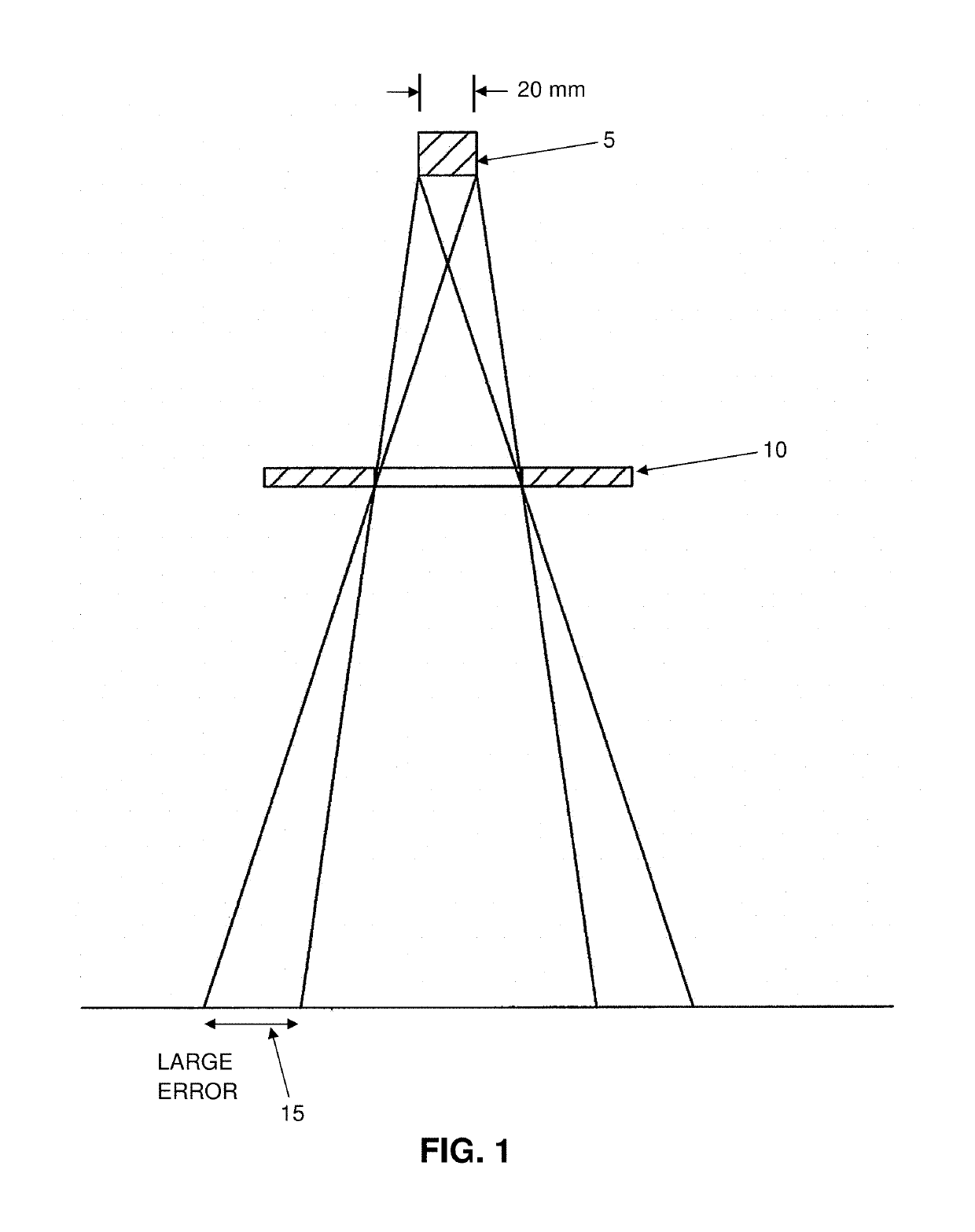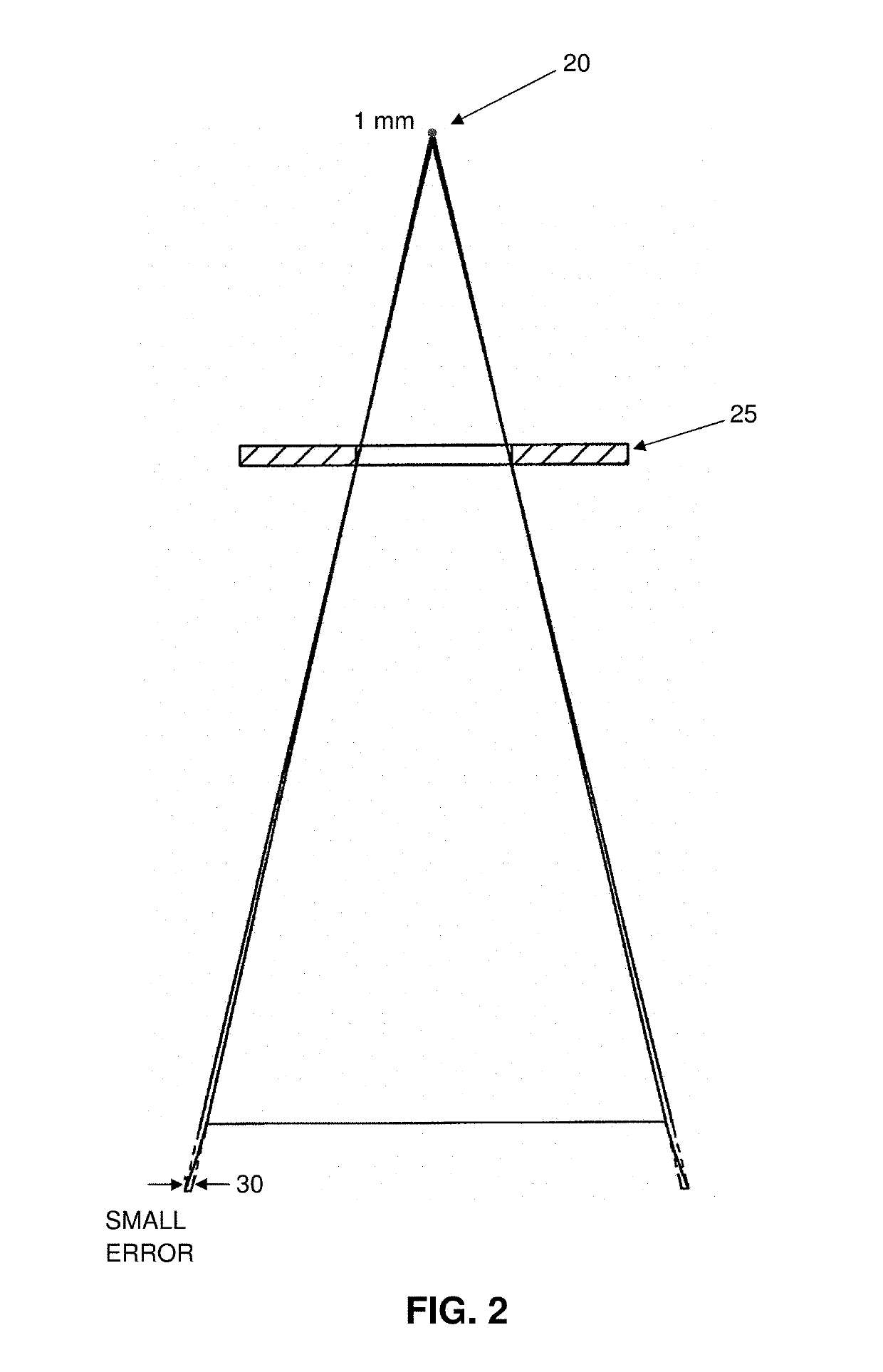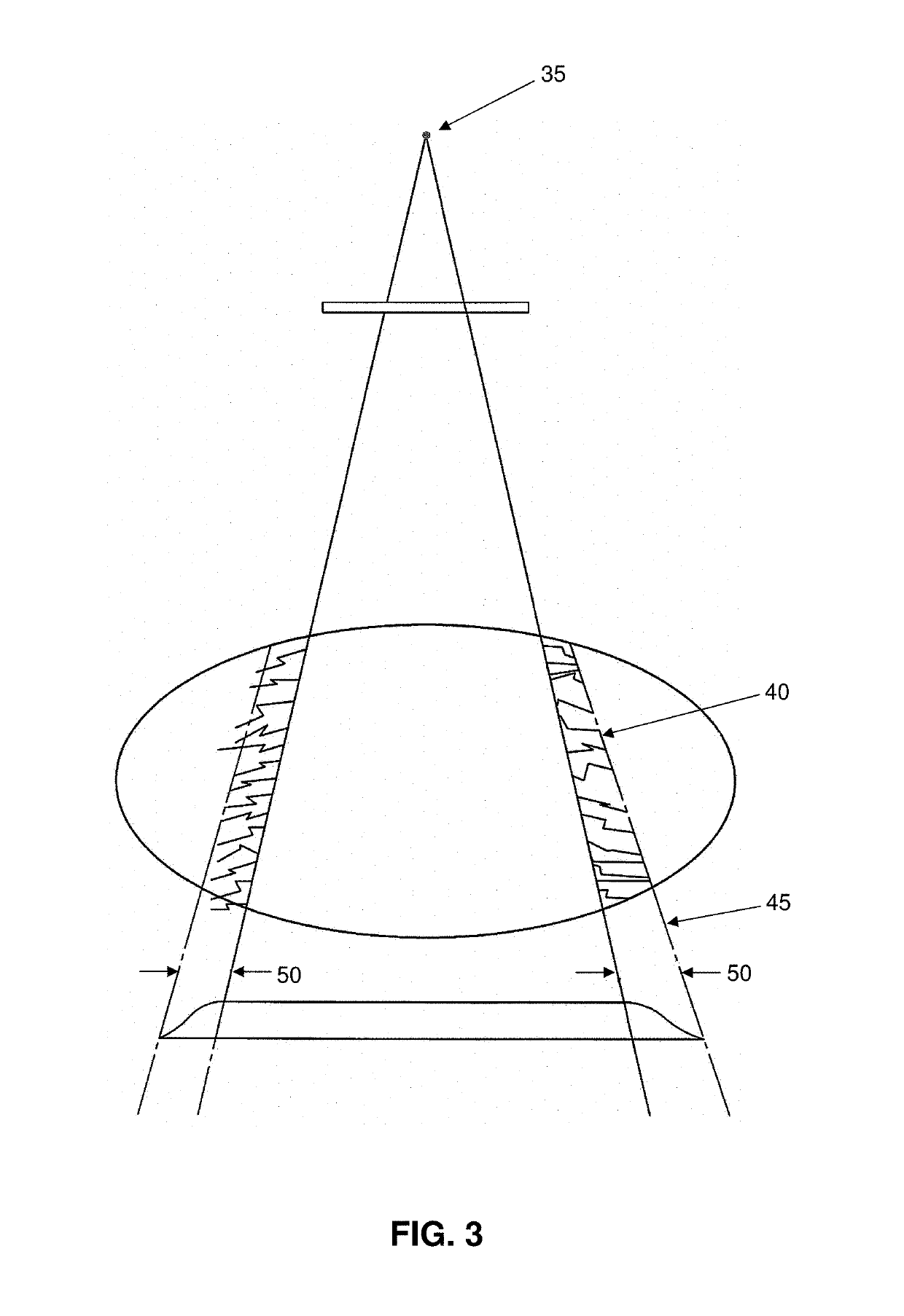Small beam area, mid-voltage radiotherapy system with reduced skin dose, reduced scatter around the treatment volume, and improved overall accuracy
a radiotherapy system and small beam area technology, applied in the field of medical equipment and procedures, can solve the problems of long-range scattering and essentially harmful radiation, and achieve the effect of matching the radiated volume to the shap
- Summary
- Abstract
- Description
- Claims
- Application Information
AI Technical Summary
Benefits of technology
Problems solved by technology
Method used
Image
Examples
Embodiment Construction
[0101]Looking now at FIG. 5, in accordance with the present invention, there is provided a radiotherapy system 70 which comprises two X-ray tubes 75 which are mounted to two C-arms 80 which are pivoted through generally vertical axis bearings with common centers 85, aligned with the spherical isocenter 90. X-ray tubes 75 are mid-voltage devices, operating at 100 kVp to 800 kVp, and have a small point source (e.g., 0.6 mm-3 mm). The two X-ray tubes 75 will always point, during a treatment, at isocenter 90. The X-ray beams of X-ray tube 75 are collimated with collimators 95 so as to produce a small diameter (e.g., 50 mm or less, and preferably of about 15 mm), well-defined (e.g., with little collimation error) beam, such that approximately 50 (or less) skin entrance portals may be used to direct well-defined beams of radiation at the treatment volume. Preferably collimators 95 are multi-leaf collimators (MLC), which need not operate symmetrically about the beam axis, such that collima...
PUM
 Login to View More
Login to View More Abstract
Description
Claims
Application Information
 Login to View More
Login to View More - R&D
- Intellectual Property
- Life Sciences
- Materials
- Tech Scout
- Unparalleled Data Quality
- Higher Quality Content
- 60% Fewer Hallucinations
Browse by: Latest US Patents, China's latest patents, Technical Efficacy Thesaurus, Application Domain, Technology Topic, Popular Technical Reports.
© 2025 PatSnap. All rights reserved.Legal|Privacy policy|Modern Slavery Act Transparency Statement|Sitemap|About US| Contact US: help@patsnap.com



